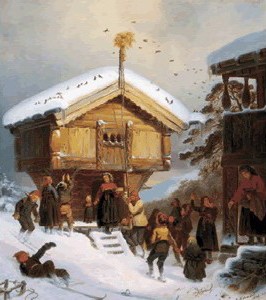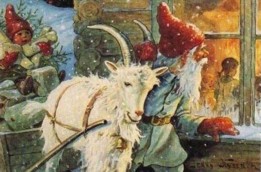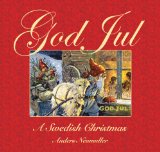|
Christmas Card History ScandinaviaChristmas Card History Scandinavia In England John Callcott Horsley produced the first Christmas card in 1843 with the message "A Merry Christmas and a Happy New Year to You.” In the U.S. the German born Louis Prang began mass production of Christmas cards in the year 1875. The custom of sending Christmas greetings in this way spread from England to the USA and via Germany and Denmark to Sweden and Norway. In Scandinavia Christmas cards became popular in the late 1800s and the tradition is still very much alive. Christmas Card History Scandinavia Norway 
The first Norwegian Christmas card is said to have been mailed in 1870, produced by a printer in Bergen by the name of Beyer. It was not until 1880 that mass production of cards got started. Some cards were imported from Denmark or Germany. The custom did not really take hold in Norway until the early 1900s – then it became customary for people to send each other Christmas cards. The custom was encouraged by the postal service for reasons that are not hard to understand. By 1883 it was “permitted” to send private cards. There was a great deal of skepticism about sending private messages on postcards that could so easily be read by others. One of the first motives on cards was a painting by Adolph Tidemand (shown on this page). It was a “stabbur” with a “julenek” on top, referencing the rural custom of putting up a sheaf of grains for the birds at holiday time. It was a custom picturesque enough to lend itself to paintings and illustrations on Christmas cards ever since. Christmas Card History Scandinavia Sweden 

In the beginning Sweden’s Christmas cards were imported from Germany and England. Gradually the typical Scandinavian motives became more prevalent. The tomte or nisse was at first dressed like an old fashioned farmer. The Swedish tomten had its origin in the legends of the hustomten. In the year 1890 Axel Eliasson started his publishing company with Christmas card production. Later he started something that came to be important for the Swedish Christmas cards and the image of the Swedish Christmas. It was the artist Jenny Nyström that came to give Sweden the image of jultomten, Christmas gifts and Christmas tree. In time her number of illustrations grew to about 600. Some say that the motives on the Christmas cards were influenced by the traditional "julbock", later replaced by Tomten or the Nisse, and the Christmas tree after it became common in Scandinavian homes. The Tomte or the Nisse was not as large as the American Santa Claus, he was more often seen as a small being with a bowl of porridge, which was his reward for looking after the farm. In Sweden during the second world war the motive was often the Swedish flag flying over the "lilla röda stugan" – the little red house - so typical of the Swedish countryside. The nostalgic image of "den lilla roda stugan innvid grinden" immortalized in song lyrics is a constant in the Swedish imagination. 
Say Merry Christmas in Swedish: God Jul In this collection you will find over 300 holiday postcard images to bring Sweden’s Christmas traditions to life. The charm, warmth, and beauty of a Swedish Christmas is captured in this remarkable collection of 300 colorful, fun, and historic postcards dating back to the 1800s. Each postcard reveals the magic behind Christmas, Scandinavian tradition and folklore. Here, the tomte/nisse meets Santa and children play with angels. With traditional postcards from renowned artists such as Jenny Nystrom, Elsa Beeskow, and Aina Stenberg, accompanied by explanations of the cultural and historical past, God Jul will make everyone that is even a little bit Swedish homesick for an Old World Christmas. Christmas Card History Scandinavia
|
